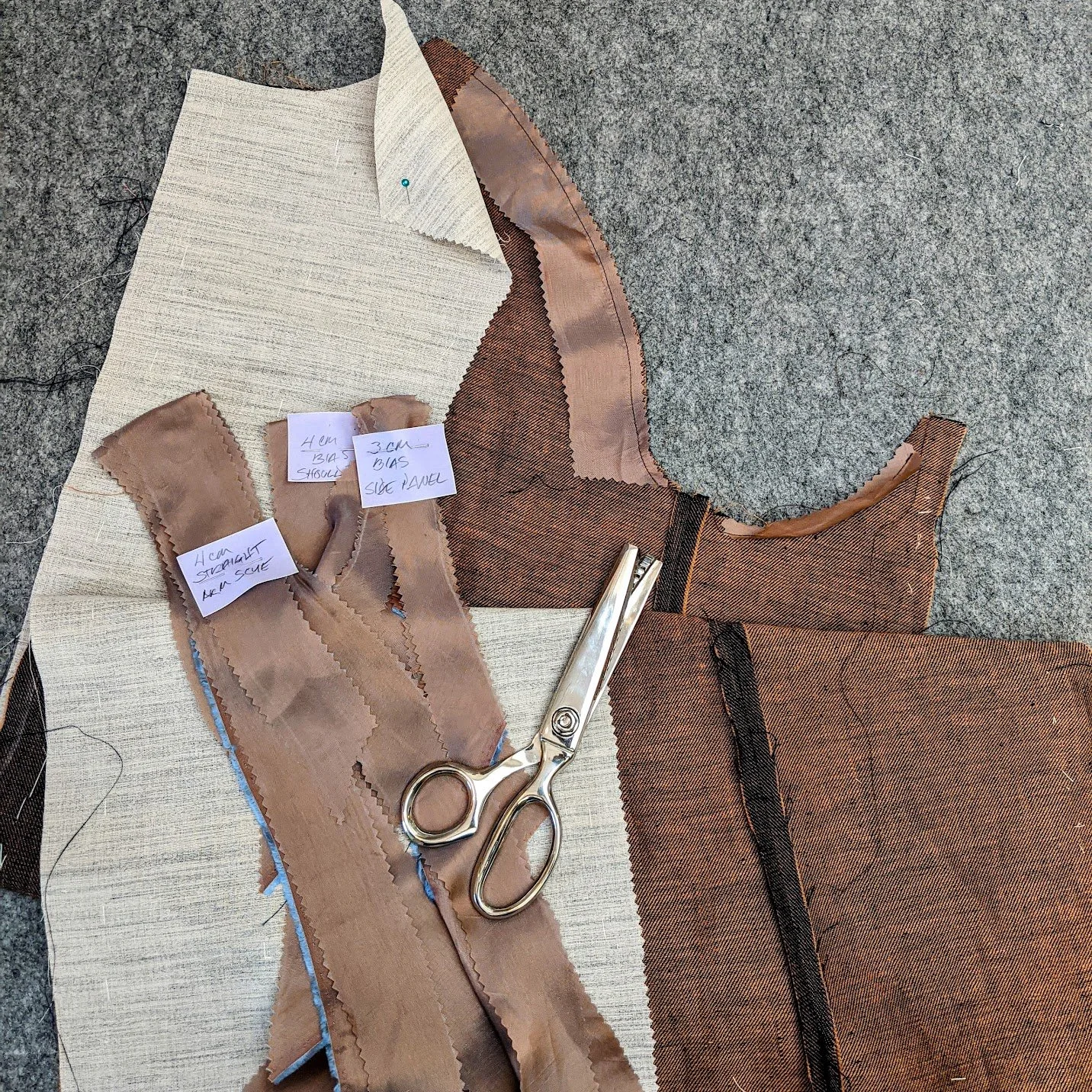The Hold Fast Raglan Overcoat - Specialized materials that make a difference
Work continues on the Hold Fast Bespoke raglan sleeved overcoat. The fitting toile required no alterations, so construction proceeds with the fashion fabric; in this case a fairly lightweight cross dyed linen. There’s much more than meets the eye in a bespoke garment; so in this post I’ll explore some of the materials and techniques that are hidden from view, but contribute to a garment’s longevity.
The Canvas - Creating and Preserving Shape
The canvas is the workhorse of a bespoke jacket or coat. It supports the garment like a foundation supports a house, or a skeleton holds up a body. You may have heard the expression “fully canvased”, but what does it mean? It indicates that a coat or jacket is supported by a specialized fabric that’s hidden inside the garment. It’s the hallmark of a true bespoke garment.
The canvas fabric is a mix of wool, cotton, maybe viscose, and most importantly, animal hair (usually goat). It’s frequently called “hair canvas” or “Hymo”. The coarse animal hair woven into the horizontal weft of the fabric gives it a characteristic “spring”. When the fabric is folded it springs right back into shape. This unique quality cannot be replicated by a fusible support that is glued onto the fabric with heat. A “fully canvased” tailored garment requires the tailor’s time and skill. There is no other way.
Traditional tailoring techniques that contribute to a garment’s longevity
The Hold Fast raglan overcoat is being constructed on a lightweight canvas that extends from the shoulder to the hem. It covers roughly half the width of the coat’s front, and also supports the pockets. It guarantees that the front of the coat will never lose its shape. During construction the linen is temporarily basted to the canvas, and the two layers are treated as one. Because the canvas cannot be pressed (remember the goat hair makes it spring back), any edges that will eventually be sewn must be replaced with another material. On this raglan coat the front edges and the neckline must be addressed. The canvas is carefully trimmed away and replaced with a lightweight bias viscose tape. This is all sewn by hand. The end result is a canvas that is suspended inside the coat, an internal “skeleton” if you will.
Silesia - Lightweight Support
Silesia is a tightly woven cotton broadcloth. It’s used to add subtle support in two main areas, the sleeve cuffs and back vent. A wide band of Silesia is applied to the sleeve cuffs during construction. It’s cut a bit long so that it folds back in the hem to add a bit more structure. It enables the hem of the sleeve to be sewn completely invisibly. Of course, this is all done by hand.
Strips of Silesia are sewn into the back vent to add structure and a bit of weight. This is all done with a hand cross stitch, catching just a single thread of the linen. The effect should be completely invisible from the right side of the garment.
Calling in the reinforcements
By its nature, the sleeve of a raglan coat has several seams on the bias which can be easily stretched out of shape; not a good thing. To prevent stretching, various strips of lining material are sewn into the seams during construction. None of this is ever seen or felt, but it insures that this coat will retain its shape over its lifetime.
Collar linen / French canvas
The Hold Fast raglan overcoat has a hidden collar stand which holds the collar up around the wearer’s neck. It’s the beige semi-circular wedge in the photo above. It’s constructed from a stiff linen fabric, sometimes called French canvas. Its unique property is that it can be molded with heat, and the resulting shape remains as it cools down. The Hold Fast coat has a fairly large dramatic collar, so there will be two layers of this specialized fabric to help support it.
I hope you’ve enjoyed seeing “behind the scenes” of this tailoring project; a glimpse of the “guts” as it were. Personally, I love working with these materials. Sure, it’s time intensive; but the results are so worth it.
The components are gradually coming together. Next time it should start looking like an overcoat.







